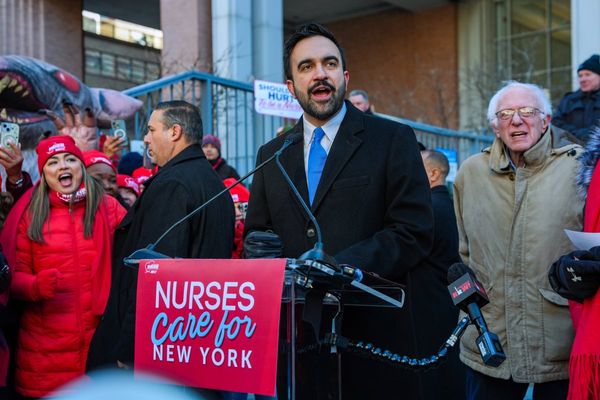
Fifteen, 20 years ago, the drift, at least culturally, seemed undeniable and unavoidable. Full-time permanent work was on the way out and instead we would all be the boss of Me Inc.
Under this model workers could sell their labour to the highest bidder and free themselves from an old model of a job for life. Moving from job to job, contract to contract, work would be tied to a project or a specific task and once that was done, a worker’s time was their own.
A 1997 essay in Fast Company magazine captured the zeitgeist under the optimistic banner of “Free agent nation”. In this nation, workers were free agents who could “achieve a beautiful synchronicity between who you are and what you do”.
In the late 1990s, this new way, this model of flexible capitalism, would benefit both worker and employer, or so we were told. The worker would get previously unimagined flexibility and be able to sell their skills to the highest bidder. And the workplace wouldn’t be stuck with financial and physical overheads that came with a permanent workforce – sick leave, superannuation and long-service leave.
For white-collar workers, this model of flexible capitalism coincided with globalisation and new technology that allowed workers to theoretically work from anywhere.
It meant that for a highly educated or in-demand sector of the economy, workers could move around the world doing contract or project work. In 2007, author and entrepreneur Tim Ferriss set out the template of how to “escape the 9-5, live anywhere, and join the new rich” in his bestselling book The 4-Hour Workweek.
“Earn dollars. Live on pesos. Compensate in rupees,” he wrote of this new model. And, “It’s too big a world to spend most of life in a cubicle.”
During these years, very few industries around the world were untouched by structural shifts in the workplace. But these shifts didn’t always provide the glamour and freedom as touted by Ferriss. Not everyone became rich. And although there was freedom in the new model, for an insecure workforce, there was also stress.
Naomi Klein wrote about the dark side of this shift in 1999’s No Logo: “A sense of impermanence is blowing through the labour force, destabilising everyone from office temps to high-tech independent contractors to restaurant and retail clerks. Factory jobs are being outsourced, garment jobs are morphing into home work and in every industry temporary contracts are replacing full, secure employment … Almost every major labour battle of the last century has focused on enforced casualisation.”
Fast forward more than two decades and the dream of flexible capitalism has become a nightmare for many workers.
The nightmare looks like this: a workplace will stick with you when demand is high and times are good but will dump you when there’s a downturn, or when you get sick, or during a pandemic (Australian Bureau of Statistics data shows the rate of casuals reduced at the start of the pandemic as businesses shut down and could not afford to keep on their casuals).
Or it looks like coming to the end of your working life with not enough superannuation.
Or it could be a more intimate and existential issue – being bereft of community, support and acknowledgement that comes with long tenure in one place; knowing and being known by a community of colleagues over the long term.
Decades ago, Fast Company, Ferris and a slew of others were excited about how technology could liberate a worker from the workplace. But today, the liberation is uneven. For every knowledge worker able to attend a Zoom meeting poolside in Bali, there’s a whole new underclass of workers, such as those in the gig economy, who are managed not by humans but by an app and its algorithms and for whom the estrangement from the workplace is material as well as existential.
In the gig economy, workers are free to provide their labour to multiple apps. But missing in these arrangements are the safety rails – the sick leave, the breaks, the superannuation – that existed in the old style of permanent full-time employment.
But there is pushback. A recent Fair Work Commission decision ruled in favour of a Deliveroo driver who sought to have his status recognised as an employee not a contractor – and therefore be able to access these rights under unfair dismissal laws.
That decision was later overturned but what is heartening is to see looser labour arrangements challenged.
There has also been a pushback on outsourcing. Qantas’s annus horribilis – cancelled flights, lost luggage, general chaos – has been blamed in part on a restructure at the start of the pandemic, where many long-term, experienced and full-time workers were laid off and replaced with people on less pay, casuals or workers from labour hire firms.
The federal court found Qantas’s decision to outsource the baggage handling and cleaning jobs was in breach of the Fair Work Act.
In Australia we are now at a really interesting juncture. The pandemic has exposed the flaws in our current workplace structures. It was in places run by labour hire firms – such as hotel quarantine – where Covid outbreaks occurred.
And we saw casual workers were the first to be let go in March 2020, and later more likely to go to work while sick because they weren’t eligible for sick leave and spread the virus.
But what makes this juncture so interesting is that worker bargaining power has not been so strong for decades. This strength is talked about in terms of pay rises, but it’s also possible that a worker without superannuation or sick leave may be able to negotiate around their entitlements, or that a casual worker may ask to be converted to a permanent employee.
In many ways the lessons of and changes wrought by the pandemic can be used to create truly modern reforms in the labour market.
The pandemic has shown us that the great benefits of casual work – that is flexibility, working from home or more project-based work – can be folded into a full-time, permanent job. They don’t need to be mutually exclusive. Genuine flexibility might look like working from home three days a week and in the office two days a week. Or it might look like a four-day week, or it might look like months of long weeks working on a project then a month or so of light work and hours.
There is a combination of the new and old that could just hit the sweet spot and truly suit the times. We could bend the flexibility and freedom of “free agent nation” to suit workers, with the stability and security inherent in the old model.
The pandemic has shown us where our problems lie, but it has also shown us the solutions.







